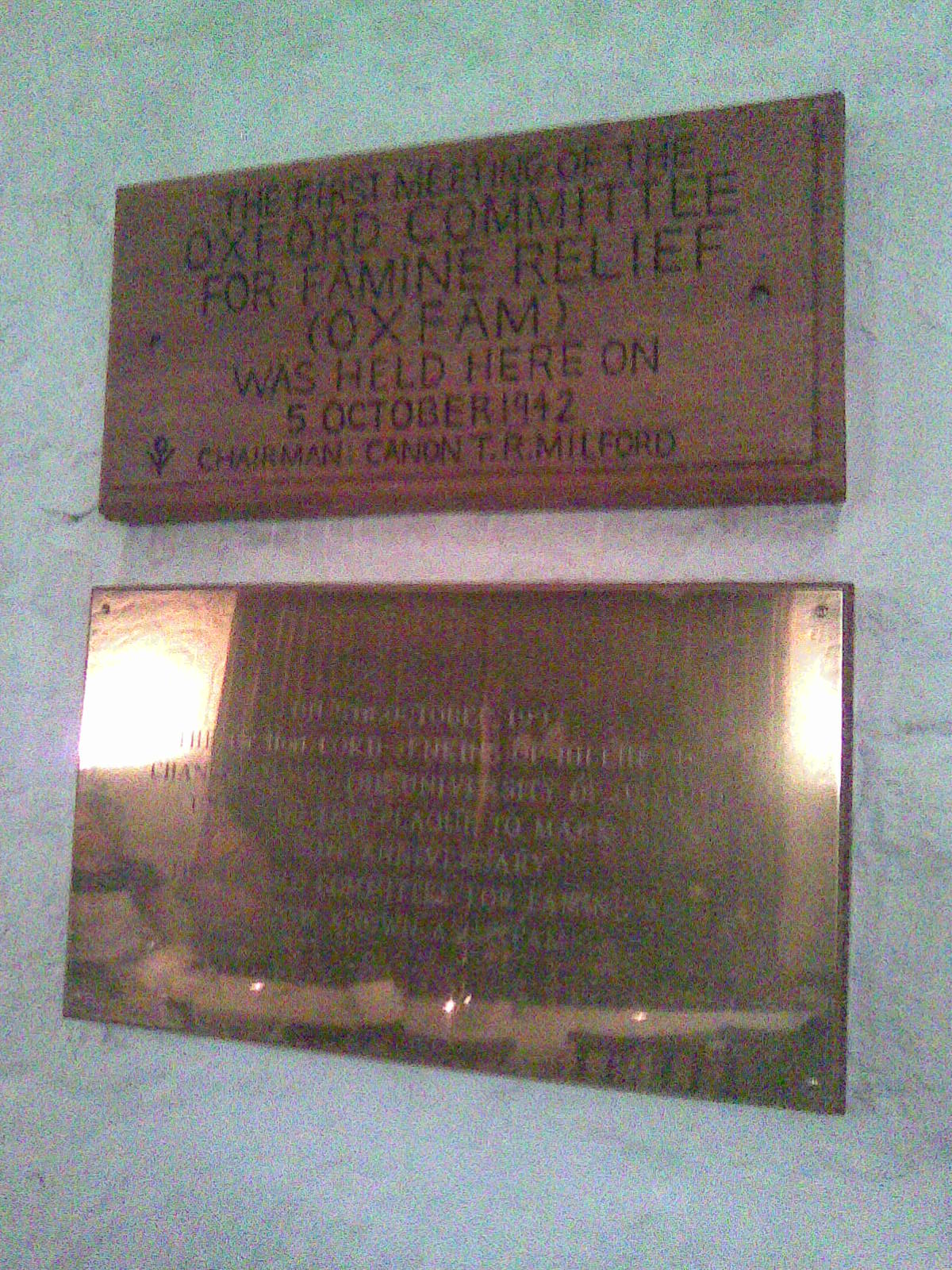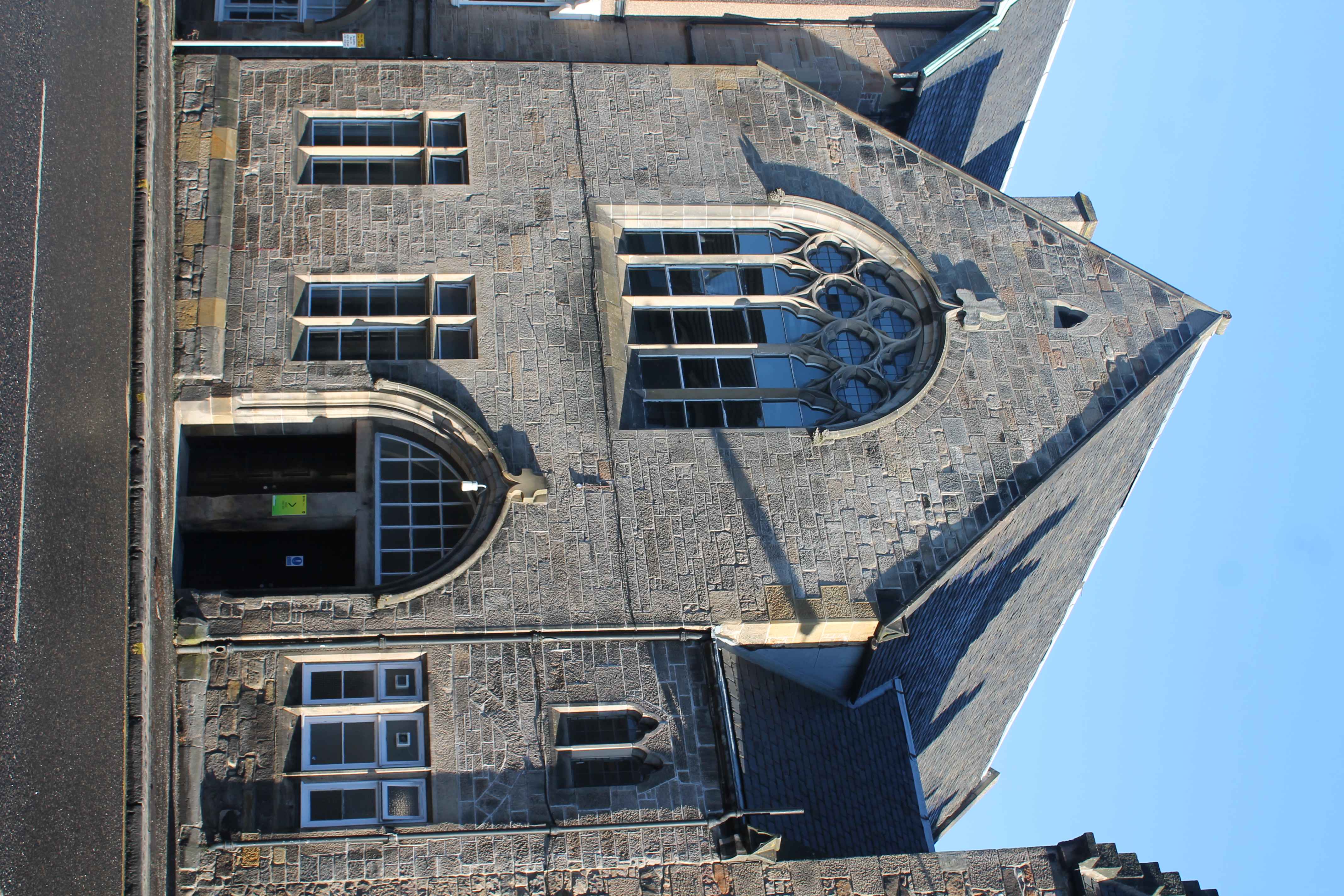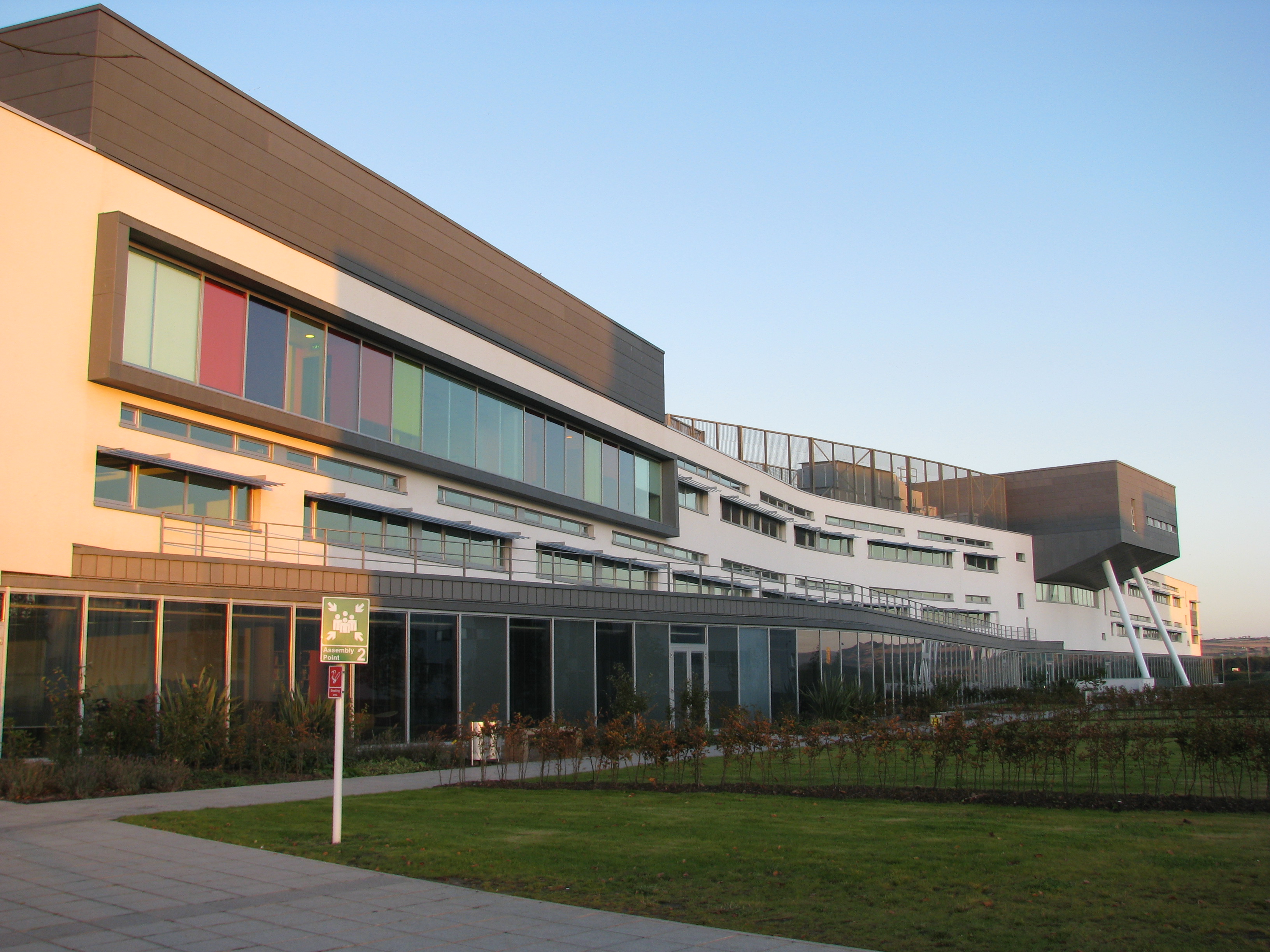|
Edinburgh University Settlement
The Edinburgh University Settlement (EUS) was a multi-purpose voluntary organisation established by University of Edinburgh in 1905. The Edinburgh University Settlement was part of a larger settlement movement which began in Britain with the founding of Toynbee Hall in London in 1886. EUS was liquidated in 2011 following bankruptcy. Foundation The main founder of the Edinburgh settlement was Sir Richard Lodge, a history professor. In proposing the foundation of the settlement Professor Lodge acknowledged that while Edinburgh was a fair city it had some 'foul spots' in it. The first location suggested for the settlement would be in the district that lay between the Cowgate and the Cannongate in Edinburgh's old town. He suggested that if the fellows and students of the University could do anything to 'brighten the lives and bring sympathy and gladness to some of the homes in those dark spots they would be going some way to repay the debt the College owed to the city. The basis ... [...More Info...] [...Related Items...] OR: [Wikipedia] [Google] [Baidu] |
University Of Edinburgh
The University of Edinburgh ( sco, University o Edinburgh, gd, Oilthigh Dhùn Èideann; abbreviated as ''Edin.'' in post-nominals) is a public research university based in Edinburgh, Scotland. Granted a royal charter by King James VI in 1582 and officially opened in 1583, it is one of Scotland's four ancient universities and the sixth-oldest university in continuous operation in the English-speaking world. The university played an important role in Edinburgh becoming a chief intellectual centre during the Scottish Enlightenment and contributed to the city being nicknamed the " Athens of the North." Edinburgh is ranked among the top universities in the United Kingdom and the world. Edinburgh is a member of several associations of research-intensive universities, including the Coimbra Group, League of European Research Universities, Russell Group, Una Europa, and Universitas 21. In the fiscal year ending 31 July 2021, it had a total income of £1.176 billion, of ... [...More Info...] [...Related Items...] OR: [Wikipedia] [Google] [Baidu] |
Oxfam
Oxfam is a British-founded confederation of 21 independent charitable organizations focusing on the alleviation of global poverty, founded in 1942 and led by Oxfam International. History Founded at 17 Broad Street, Oxford, as the Oxford Committee for Famine Relief by a group of Quakers, social activists, and Oxford academics in 1942 and registered in accordance with UK law in 1943, the original committee was a group of concerned citizens, including Henry Gillett (a prominent local Quaker), Theodore Richard Milford, Gilbert Murray and his wife Mary, Cecil Jackson-Cole, and Alan Pim. The committee met in the Old Library of University Church of St Mary the Virgin, Oxford, for the first time in 1942, and its aim was to help starving citizens of occupied Greece, a famine caused by the Axis occupation of Greece and Allied naval blockades and to persuade the British government to allow food relief through the blockade. The Oxford committee was one of several local committees for ... [...More Info...] [...Related Items...] OR: [Wikipedia] [Google] [Baidu] |
History Of The University Of Edinburgh
The University of Edinburgh ( sco, University o Edinburgh, gd, Oilthigh Dhùn Èideann; abbreviated as ''Edin.'' in post-nominals) is a public research university based in Edinburgh, Scotland. Granted a royal charter by King James VI in 1582 and officially opened in 1583, it is one of Scotland's four ancient universities and the sixth-oldest university in continuous operation in the English-speaking world. The university played an important role in Edinburgh becoming a chief intellectual centre during the Scottish Enlightenment and contributed to the city being nicknamed the "Athens of the North." Edinburgh is ranked among the top universities in the United Kingdom and the world. Edinburgh is a member of several associations of research-intensive universities, including the Coimbra Group, League of European Research Universities, Russell Group, Una Europa, and Universitas 21. In the fiscal year ending 31 July 2021, it had a total income of £1.176 billion, of which £ ... [...More Info...] [...Related Items...] OR: [Wikipedia] [Google] [Baidu] |
Settlement Houses In The United Kingdom
Settlement may refer to: *Human settlement, a community where people live *Settlement (structural), the distortion or disruption of parts of a building *Closing (real estate), the final step in executing a real estate transaction *Settlement (finance), where securities are delivered against payment of money *Settlement (litigation), a resolution between disputing parties about a legal case *Settlement (trust), a deed whereby property is given by a settlor into trust *Israeli settlement, Jewish civilian communities built on land occupied by Israel See also * * *Act of Settlement (other), various legislation *Settlement Act, or Poor Relief Act 1662 *Collective settlement, another name for an intentional community *Collective settlement (litigation), a legal term *Settler colonialism, replacing the original population with a new society of settlers *Settlement geography, investigating the part of the earth's surface settled by humans *Settlement movement, a Victorian era refo ... [...More Info...] [...Related Items...] OR: [Wikipedia] [Google] [Baidu] |
Universities In Scotland
There are fifteen universities in Scotland and three other institutions of higher education that have the authority to award academic degrees. The first university college in Scotland was founded at St John's College, St Andrews in 1418 by Henry Wardlaw, bishop of St Andrews. St Salvator's College was added to St Andrews in 1450. The University of Glasgow was founded in 1451 and King's College, Aberdeen in 1495. St Leonard's College was founded in St Andrews in 1511 and St John's College was re-founded as St Mary's College, St Andrews in 1538, as a Humanist academy for the training of clerics. Public lectures that were established in Edinburgh in the 1540s, would eventually become the University of Edinburgh in 1582. After the Reformation, Scotland's universities underwent a series of reforms associated with Andrew Melville. After the Restoration there was a purge of Presbyterians from the universities, but most of the intellectual advances of the preceding period were preser ... [...More Info...] [...Related Items...] OR: [Wikipedia] [Google] [Baidu] |
Charities Based In Scotland
A charitable organization or charity is an organization whose primary objectives are philanthropy and social well-being (e.g. educational, religious or other activities serving the public interest or common good). The legal definition of a charitable organization (and of charity) varies between countries and in some instances regions of the country. The regulation, the tax treatment, and the way in which charity law affects charitable organizations also vary. Charitable organizations may not use any of their funds to profit individual persons or entities. (However, some charitable organizations have come under scrutiny for spending a disproportionate amount of their income to pay the salaries of their leadership). Financial figures (e.g. tax refund, revenue from fundraising, revenue from sale of goods and services or revenue from investment) are indicators to assess the financial sustainability of a charity, especially to charity evaluators. This information can impact a chari ... [...More Info...] [...Related Items...] OR: [Wikipedia] [Google] [Baidu] |
New College Settlement
The New College Settlement was a student settlement based on the Pleasance in the Southside of Edinburgh, Scotland. Founded by students of New College in 1893, its work continued until 1952. New College was the ministerial training college for the Free Church of Scotland. The New College Missionary Society had undertaken home mission work in deprived areas of Edinburgh since 1845, settling in the former buildings of Pleasance Free Church in 1876. In 1893, a tenement for resident student workers was added to the mission premises, establishing the mission as part of the growing settlement movement. Having previously relied on student wardens, a permanent, ordained warden, John Harry Miller, was appointed in 1908. In 1913, the settlement was constituted as Pleasance Mission Church. In 1919, this united with nearby Arthur Street United Free Church. Miller became minister of the united charge of Pleasance United Free Church, holding the role in tandem with the wardenship of the settl ... [...More Info...] [...Related Items...] OR: [Wikipedia] [Google] [Baidu] |
Forest Cafe
A forest is an area of land dominated by trees. Hundreds of definitions of forest are used throughout the world, incorporating factors such as tree density, tree height, land use, legal standing, and ecological function. The United Nations' Food and Agriculture Organization (FAO) defines a forest as, "Land spanning more than 0.5 hectares with trees higher than 5 meters and a canopy cover of more than 10 percent, or trees able to reach these thresholds ''in situ''. It does not include land that is predominantly under agricultural or urban use." Using this definition, '' Global Forest Resources Assessment 2020'' (FRA 2020) found that forests covered , or approximately 31 percent of the world's land area in 2020. Forests are the predominant terrestrial ecosystem of Earth, and are found around the globe. More than half of the world's forests are found in only five countries (Brazil, Canada, China, Russia, and the United States). The largest share of forests (45 percent) are in th ... [...More Info...] [...Related Items...] OR: [Wikipedia] [Google] [Baidu] |
Edinburgh Sheriff Court
Edinburgh Sheriff Court is a sheriff court in Chambers Street in Edinburgh, within the sheriffdom of Edinburgh and Borders. History The new court was commissioned by the Scottish Courts and Tribunals Service to replace the Old Sheriff Court in the Lawnmarket. The site they selected had previously been occupied by a part of Heriot-Watt University. Designed by John Kirkwood Wilson of PSA Projects, it was built with 16 courtrooms, at a cost of £47 million, and was officially opened to the public in September 1994. Operations The court deals with both criminal and civil cases. There are currently thirteen sheriffs in post at Edinburgh Sheriff Court. They sit alone in civil cases and are assisted by a jury of fifteen members selected from the electoral roll in some criminal cases (cases using solemn procedure only). The Sheriff Principal In Scotland a sheriff principal (''pl''. sheriffs principal) is a judge in charge of a sheriffdom with judicial, quasi-judicial, and administ ... [...More Info...] [...Related Items...] OR: [Wikipedia] [Google] [Baidu] |
City Of Edinburgh Council
The City of Edinburgh Council is the local government authority for the city of Edinburgh, capital of Scotland. With a population of in mid-2019, it is the second most populous local authority area in Scotland. In its current form, the council was created in 1996 under the Local Government etc. (Scotland) Act 1994, to replace the City of Edinburgh District Council of the Lothian region, which had, itself, been created in 1975. The history of local government in Edinburgh, however, stretches back much further. Around 1130, David I made the town a royal burgh and a burgh council, based at the Old Tolbooth is recorded continuously from the 14th century. The council is currently based in Edinburgh City Chambers with a main office nearby at Waverley Court. History Before 1368 the city was run from a pretorium (a Latin term for Tolbooth), and later from around 1400 from the Old Tolbooth next to St Giles' Cathedral. A Tolbooth is the main municipal building of a Scottish burgh p ... [...More Info...] [...Related Items...] OR: [Wikipedia] [Google] [Baidu] |
Edinburgh University Library
Edinburgh University Library is the main library of the University of Edinburgh and one of the most important libraries of Scotland. The University Library was moved in 1827 to William Playfair's Upper Library in the Old College building. The collections in Edinburgh University Old College were moved in 1967 to the purpose-built eight-storey Main Library building at George Square, one of the largest academic libraries in the world. Today, Edinburgh's university-wide library system holds over 3.8m books, e-books and e-journals in total. History The University was founded by Royal Charter from King James VI in 1582 and opened in 1583, however the library pre-dated this by three years. The initial collection was a bequest of 276 theological books from Clement Littill, an advocate who left his collection to the town in 1580. Until 1708, the teaching staff consisted of four regents and the Principal, the former taking each class through a year's part of the whole arts curriculum o ... [...More Info...] [...Related Items...] OR: [Wikipedia] [Google] [Baidu] |
Queen Margaret University College
Queen Margaret University is a university, founded in 1875 and located in Edinburgh, Scotland. It is named after the Scottish Queen Saint Margaret. History The university was founded in 1875, as ''The Edinburgh School of Cookery and Domestic Economy'', by Christian Guthrie Wright and Louisa Stevenson, both members of the Edinburgh Ladies' Educational Association. The School was founded as a women-only institution, with twin aims of improving women's access to higher education and improving the diets of working class families. Teaching was initially delivered via lectures at the Royal Museum, supplemented by a programme of public lectures and demonstrations delivered nationwide, but in 1877 the School established a base at Shandwick Place, in Haymarket. The school moved in 1891 to Atholl Crescent, expanding its courses and offering residential places to students. In 1909, the School was designated a Central Institution and brought under the public control of the Scottish ... [...More Info...] [...Related Items...] OR: [Wikipedia] [Google] [Baidu] |






.jpg)

